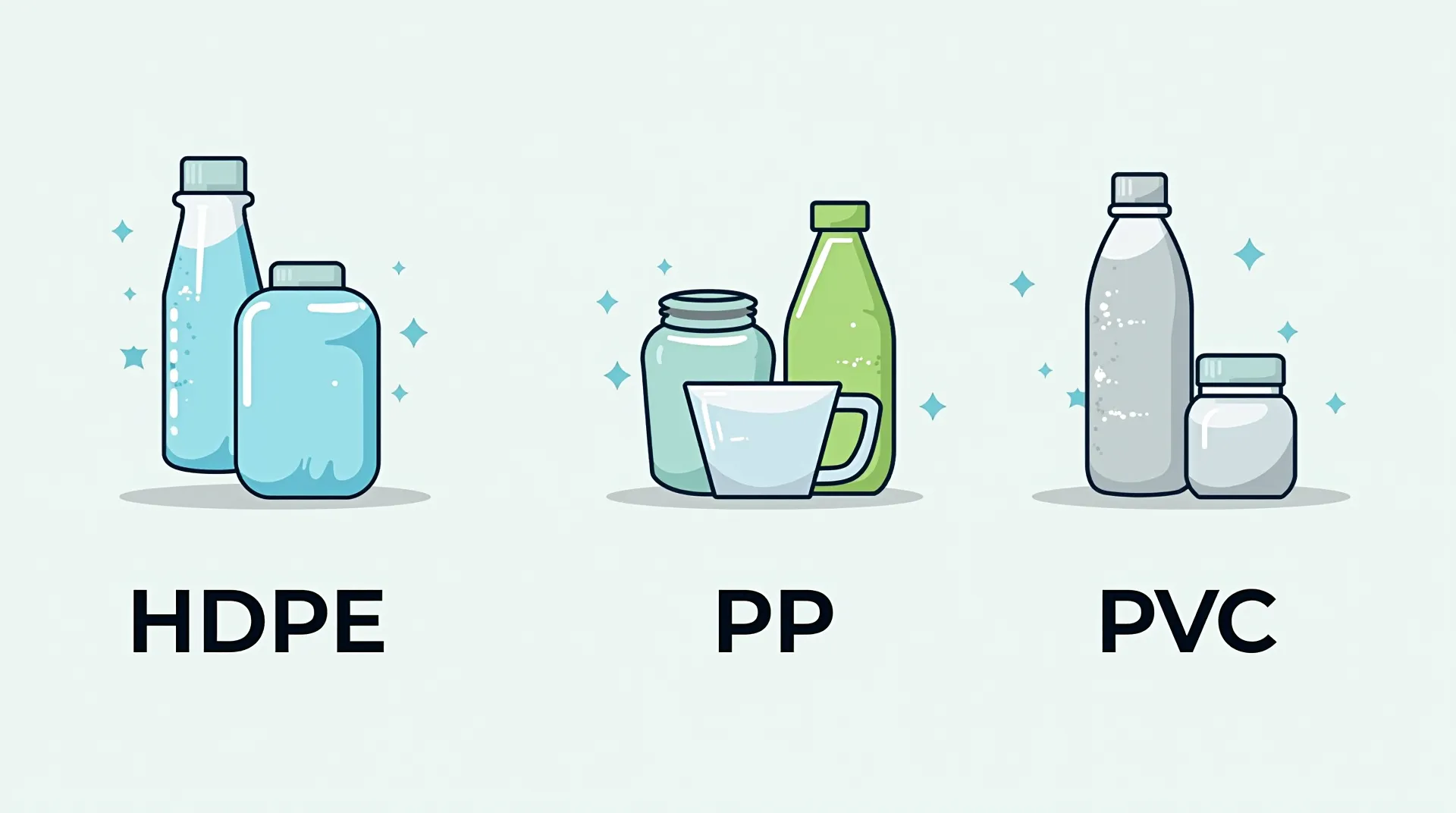Rigid plastics are widely used in various industries due to their durability, versatility, and ease of manufacturing. Below are some of the most common types of rigid plastics, including High-Density Polyethylene (HDPE), Polypropylene (PP), and Polyvinyl Chloride (PVC), among others.
1. High-Density Polyethylene (HDPE)
Properties:
- High Strength-to-Density Ratio: Offers excellent strength while remaining lightweight.
- Chemical Resistance: Resistant to many solvents, acids, and bases.
- Moisture Resistant: Does not absorb water, making it ideal for applications exposed to moisture.
- Durable and Impact Resistant: Withstands impact without cracking or breaking.
Common Uses:
- Containers and Bottles: Milk jugs, detergent bottles.
- Pipes and Fittings: Used extensively in plumbing and irrigation systems.
- Plastic Lumber: Used for outdoor furniture, decking, and playground equipment.
- Toys: Durable toys that require strength and safety.
2. Polypropylene (PP)
Properties:
- High Melting Point: Suitable for applications involving heat.
- Excellent Fatigue Resistance: Can endure repeated bending without breaking.
- Chemical Resistance: Resistant to acids, bases, and many organic solvents.
- Lightweight: Lower density compared to many other plastics.
Common Uses:
- Automotive Parts: Bumpers, battery cases, and interior components.
- Packaging: Food containers, caps, and closures.
- Textiles: Used in carpets, upholstery, and non-woven fabrics.
- Medical Devices: Syringes, lab equipment due to its sterilization capability.
3. Polyvinyl Chloride (PVC)
Properties:
- Versatile Mechanical Properties: Can be rigid or flexible depending on additives.
- Excellent Chemical Resistance: Resistant to acids, bases, and salts.
- Good Electrical Insulator: Used in electrical applications.
- Durable and Long-Lasting: Resistant to environmental degradation.
Common Uses:
- Construction Materials: Pipes, window frames, and siding.
- Electrical Cable Insulation: Protects electrical wiring.
- Medical Devices: Blood bags, tubing, and containers.
- Consumer Goods: Credit cards, toys, and household items.
4. Polyethylene Terephthalate (PET or PETE)
Properties:
- High Tensile Strength: Strong and lightweight.
- Excellent Barrier Properties: Good resistance to gases and moisture.
- Recyclable: Widely recycled, reducing environmental impact.
- Transparent and Glossy Finish: Aesthetic appeal for packaging.
Common Uses:
- Beverage Bottles: Soft drink and water bottles.
- Food Packaging: Trays, containers, and clamshell packaging.
- Textiles: Polyester fibers for clothing and upholstery.
- Electronics: Components in electronic devices due to its insulating properties.
5. Polystyrene (PS)
Properties:
- Rigid and Transparent: Clear and hard, making it visually appealing.
- Good Insulator: Excellent thermal and electrical insulation properties.
- Easy to Mold and Shape: Suitable for intricate designs.
Common Uses:
- Packaging Materials: Foam packaging, disposable cutlery, and CD cases.
- Consumer Electronics: Housings for TVs, computers, and appliances.
- Medical Equipment: Disposable syringes and laboratory containers.
- Toys and Models: Used for detailed and lightweight items.
6. Acrylonitrile Butadiene Styrene (ABS)
Properties:
- High Impact Resistance: Tough and resistant to physical impacts.
- Good Dimensional Stability: Maintains shape under stress and temperature changes.
- Easily Molded and Machined: Facilitates manufacturing of complex parts.
- Glossy Finish: Suitable for aesthetically pleasing products.
Common Uses:
- Automotive Parts: Dashboard components, wheel covers, and interior trims.
- Consumer Electronics: Housings for computers, printers, and gaming consoles.
- Toys: LEGO bricks are a famous example of ABS use.
- Household Appliances: Parts of vacuum cleaners, refrigerators, and washing machines.
7. Polycarbonate (PC)
Properties:
- Exceptional Impact Resistance: Nearly unbreakable, even under extreme conditions.
- High Transparency: Clear and glass-like appearance.
- Heat Resistant: Can withstand high temperatures without deforming.
- Good Electrical Insulator: Suitable for electronic applications.
Common Uses:
- Safety Equipment: Helmets, bulletproof glass, and protective shields.
- Optical Discs: CDs, DVDs, and Blu-ray discs.
- Automotive and Aerospace Components: Lightweight and strong parts.
- Electronics: Smartphone screens, laptops, and other display devices.
Comparison of Common Rigid Plastics
| Plastic Type | Density (g/cm³) | Tensile Strength (MPa) | Common Applications |
|---|---|---|---|
| HDPE | 0.93–0.97 | 20–37 | Bottles, pipes, plastic lumber |
| PP | 0.90–0.92 | 30–50 | Automotive parts, packaging, textiles |
| PVC | 1.16–1.58 | 50–60 | Pipes, electrical insulation, medical devices |
| PET | 1.38–1.40 | 55–75 | Beverage bottles, textiles, electronics |
| PS | 1.04–1.06 | 30–50 | Packaging, electronics housings, toys |
| ABS | 1.04–1.06 | 40–50 | Toys, electronics, automotive parts |
| PC | 1.20–1.22 | 60–70 | Safety equipment, optical discs, electronics |
Note: The values provided are approximate and can vary based on specific formulations and manufacturing processes.
Environmental Considerations
While rigid plastics offer numerous advantages, it’s important to consider their environmental impact:
- Recyclability: Plastics like PET and HDPE are widely recycled, reducing waste and conserving resources.
- Production Impact: Manufacturing plastics often involves significant energy consumption and the use of non-renewable resources.
- Disposal Challenges: Non-recycled plastics can persist in the environment, contributing to pollution and harming wildlife.
Sustainable Practices:
- Recycling Programs: Encourage the recycling of rigid plastics to minimize environmental footprint.
- Biodegradable Alternatives: Research and development of biodegradable plastics are ongoing to provide more eco-friendly options.
- Reducing Usage: Opting for reusable products and minimizing single-use plastics can significantly impact environmental conservation.
Conclusion
Rigid plastics like HDPE, PP, PVC, PET, PS, ABS, and PC are integral to modern life, offering a balance of strength, durability, and versatility. Understanding their properties and applications helps in selecting the right material for specific needs while also considering environmental impacts and sustainability.



